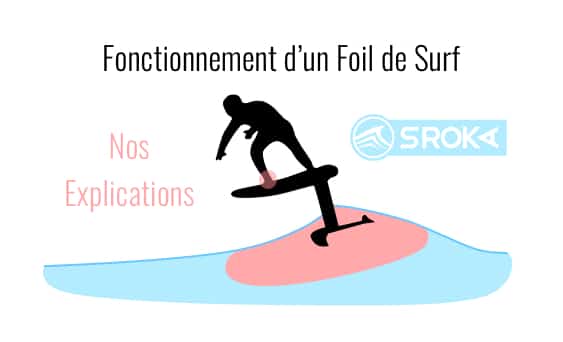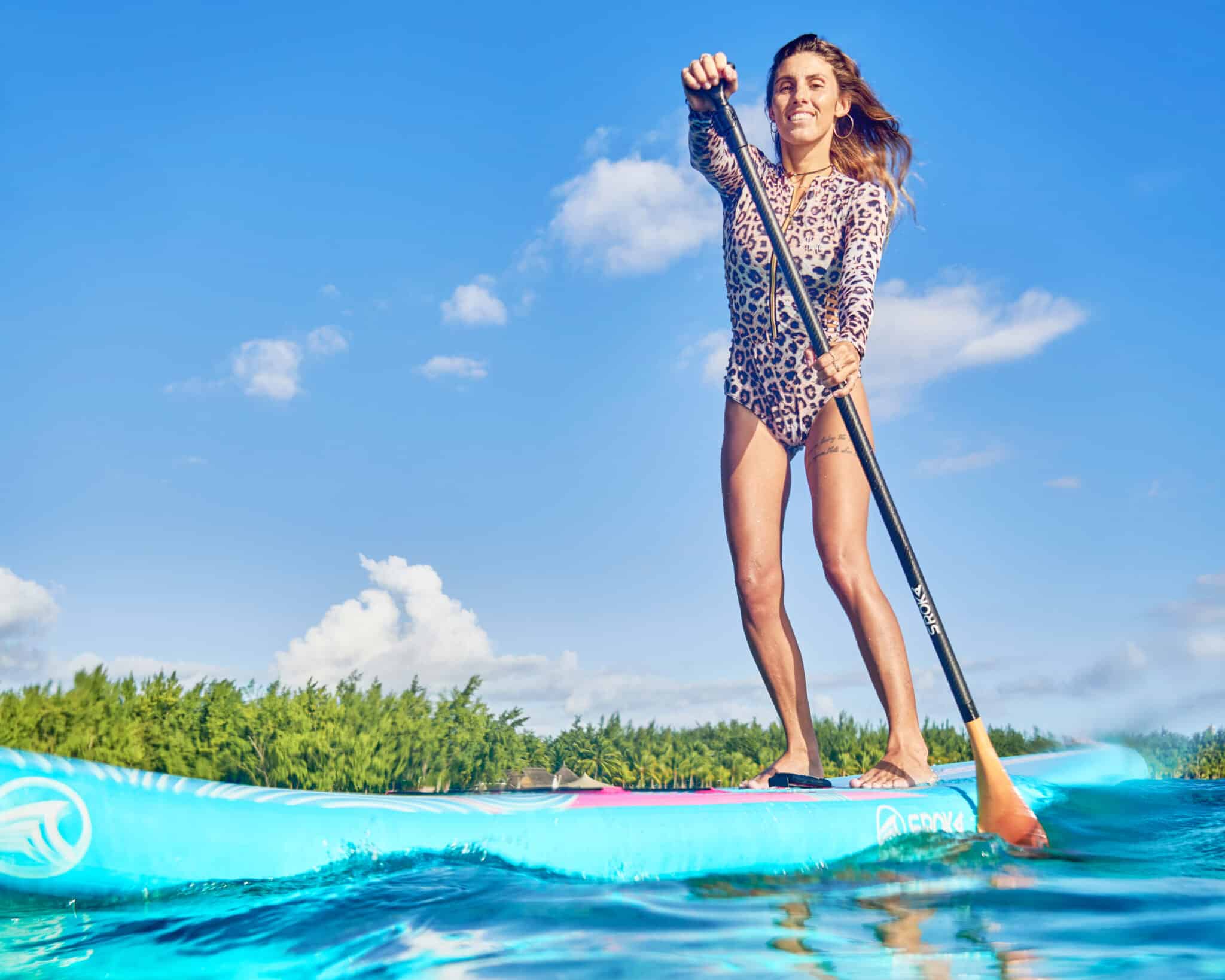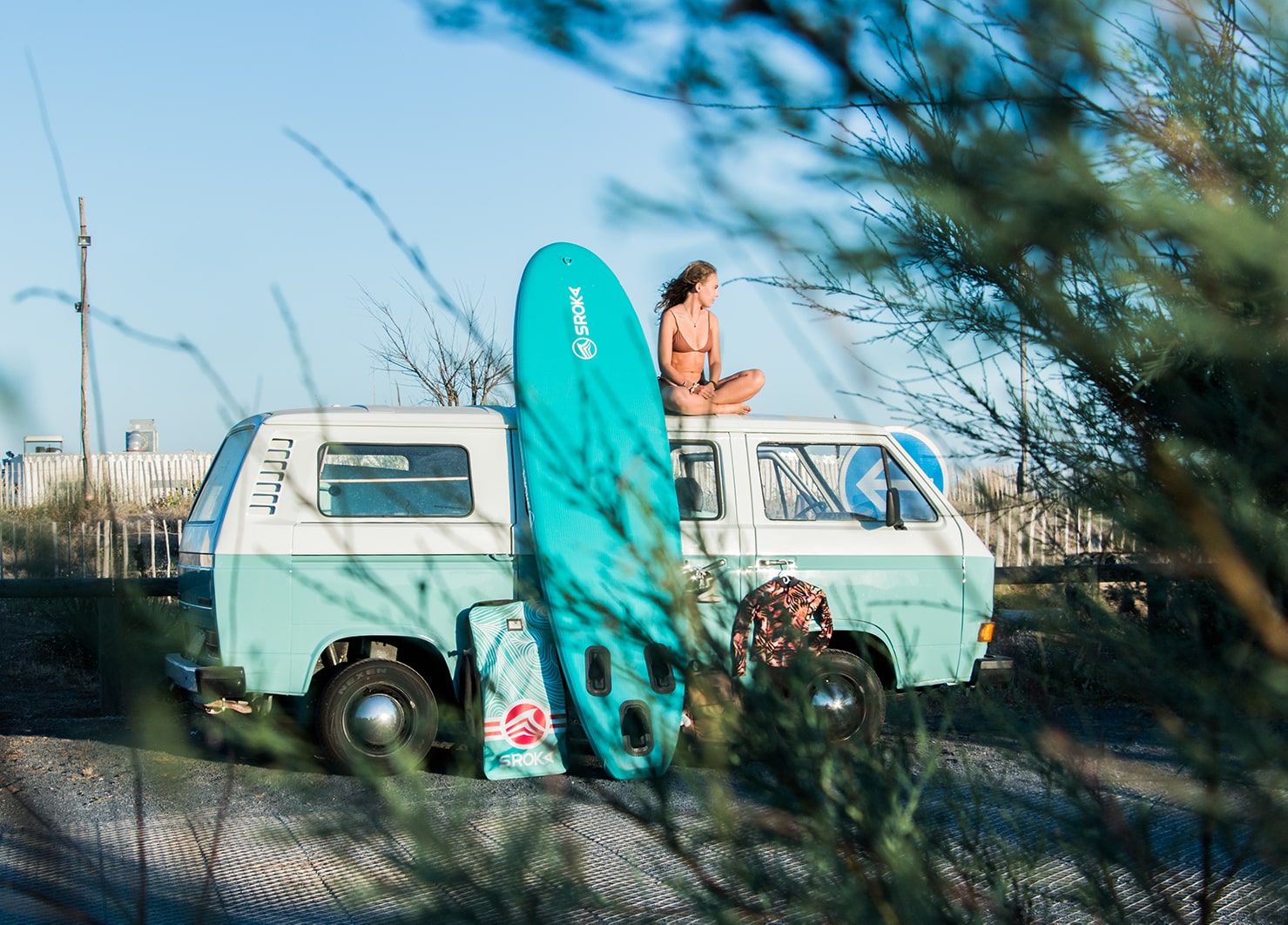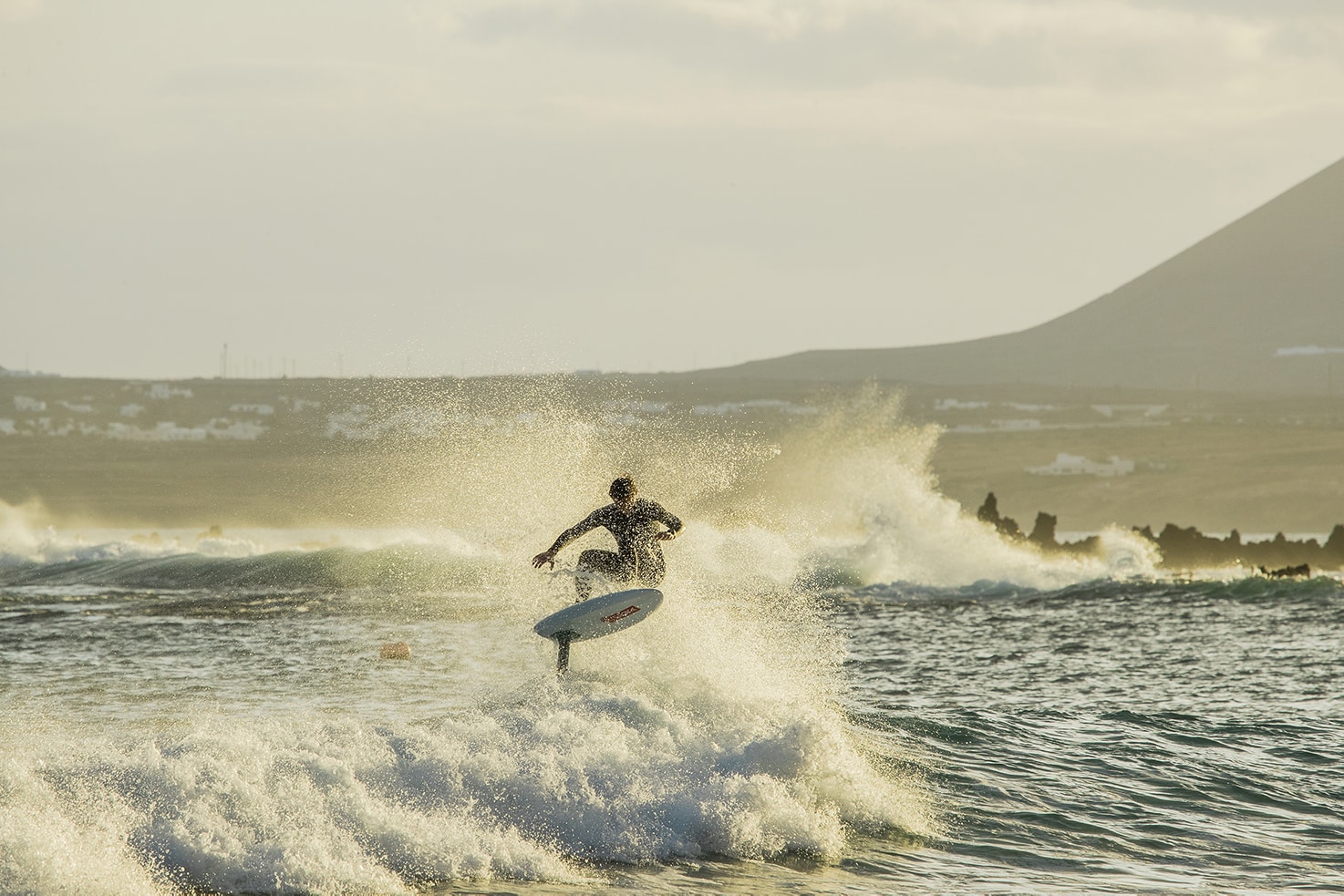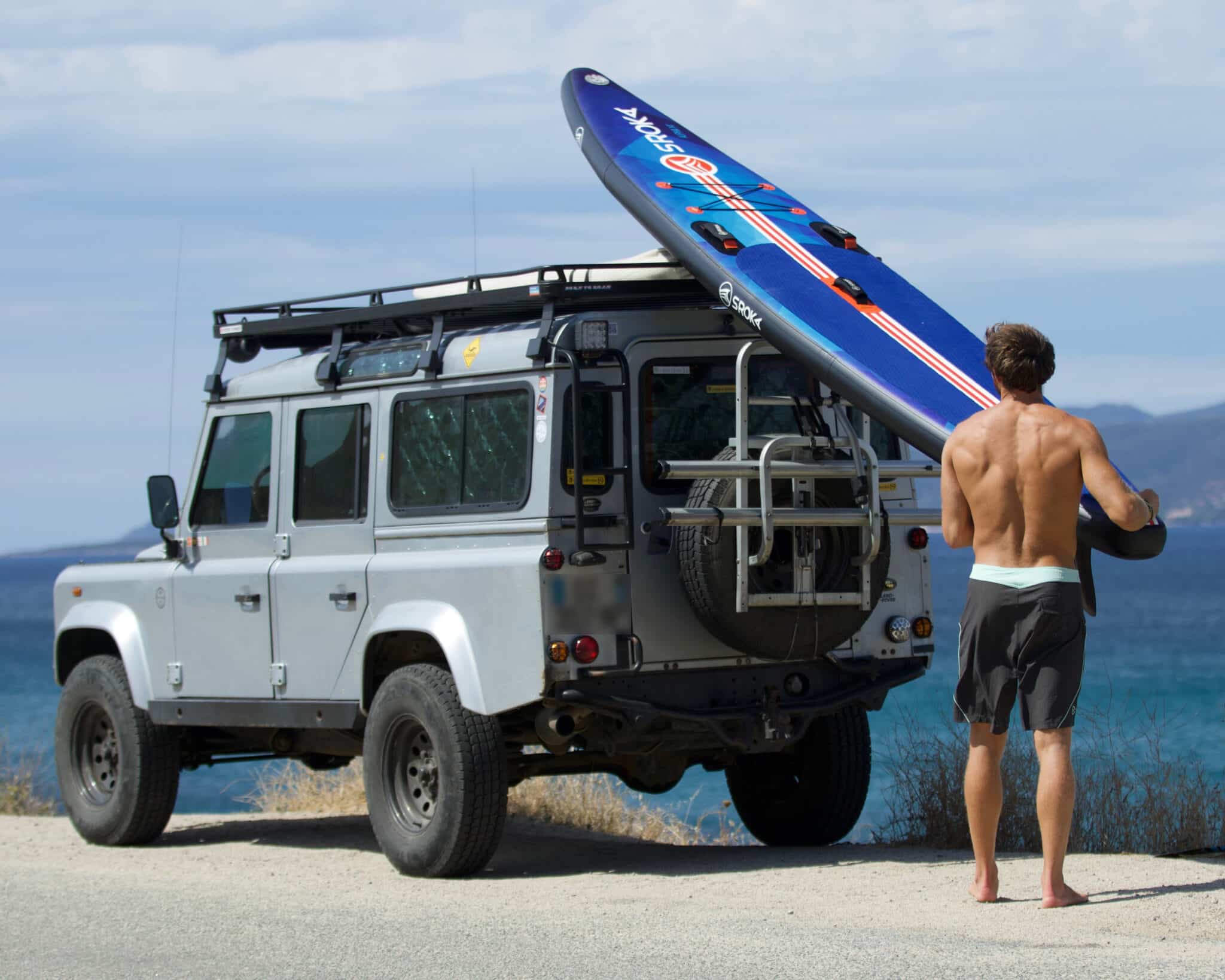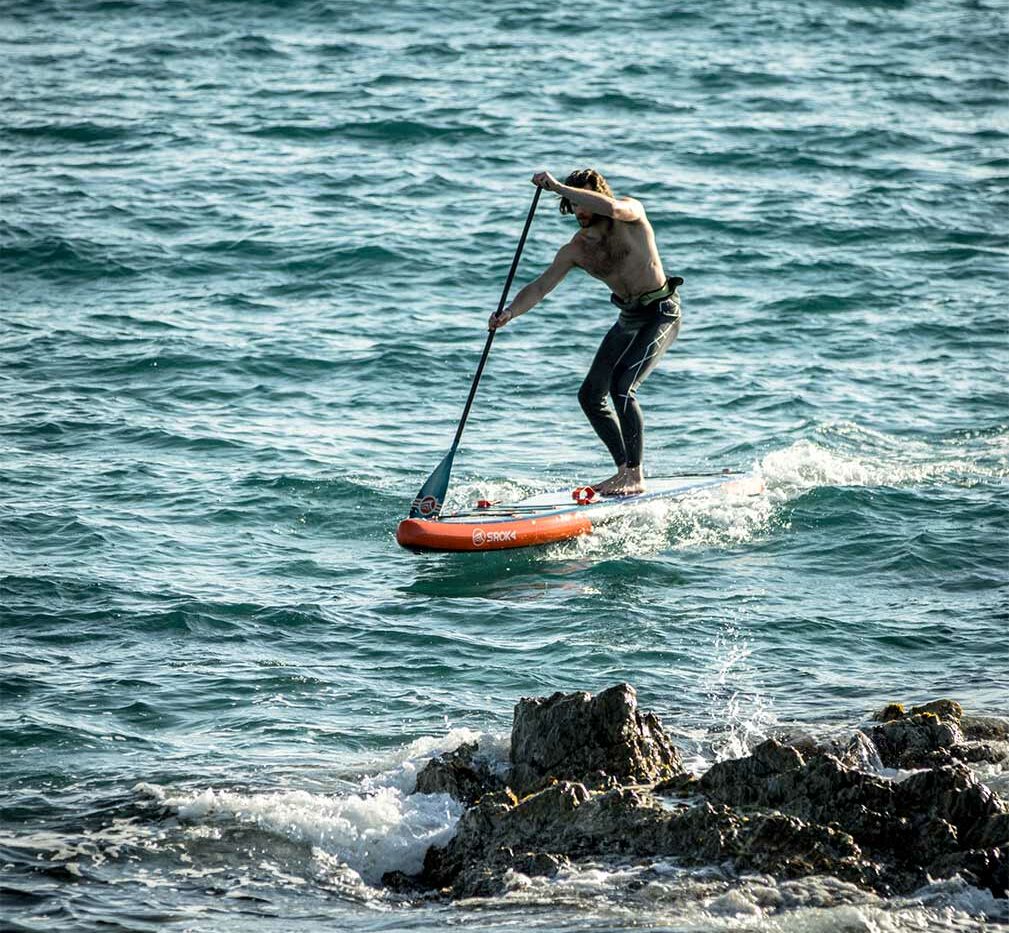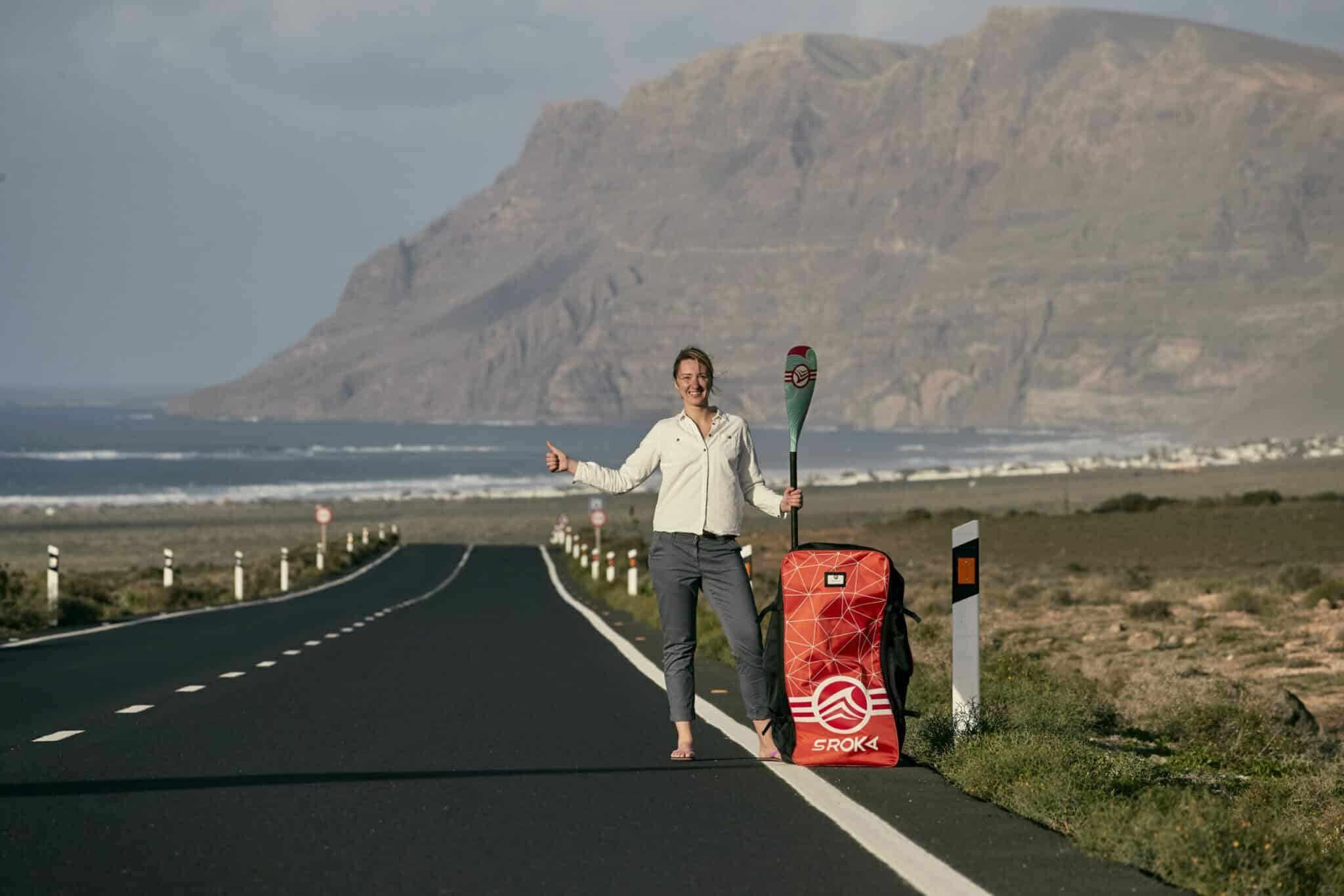 LE MAGAZINE
LE MAGAZINEHow to go faster with wingfoil?

How to go faster with wingfoil?
The exhilarating hybrid sport of wing foil offers a unique sensation of freedom and speed. Whether you’re a beginner or an experienced rider, the quest for speed is often at the heart of the experience. But how do you optimize your wing speed foil? SROKA Company and kiteboarding equipment expert Bruno SROKA (world kiteboarding champion) reveal the secrets to maximizing your performance.
So let’s take a look at some tips to help you go faster and faster at Wing foil.
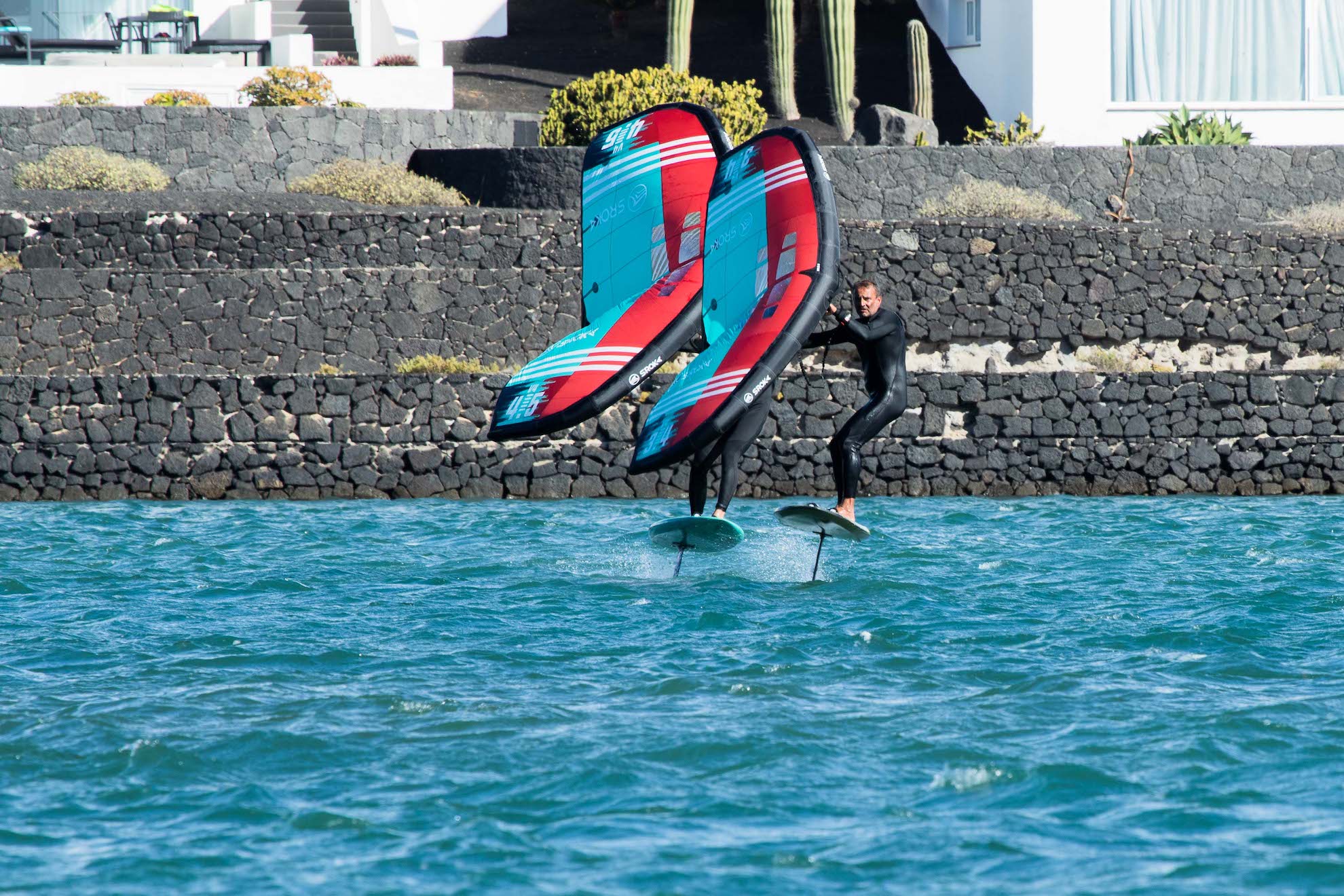
Why Speed Is Crucial Wing Foil
The Wingfoil speed record is 37.89 knots, or 70.17 km/h over one second. All this while being one meter above the water. To reach these speeds, the rider used a foil foil kite for the Olympics, with a very small front fin surface area (around 500 cm2).
1.1. Sensations and adrenalin :
Speed gives you a thrill and an incomparable adrenalin rush. It lets you fully feel the power of the wind and the glide of foil. It also makes it easier to get through all the maneuvers on the water, to jump higher and jibe more easily. Speed is fundamental to stability on the water.
Not all spots lend themselves to going fast. So you need to choose your spot carefully, depending on what you want to do. Sailing on a flat stretch of water with no current and a steady wind is fundamental to going fast. We recommend “Leucate-type” spots with offshore winds or relatively enclosed waters, because even with a very strong wind, the water will remain flat.
1.2. Performance and Progress :
Speed is a key element in wing foil performance. It enables you to perform more radical maneuvers, jump higher and cover greater distances, and climb better upwind. But it’s not innate to go fast; you have to learn, understand how to set up a foil and progress to push back the limits.

Choosing the right Wing Foil equipment for speed (SROKA expertise)
2.1. L’Aile, la wing : Le Propulseur
TheWingfoil wing is your engine. That’s why it’s important to choose a wing suited to the conditions and your size. Not all Wing foil not all wings allow you to go fast.
- A slim, elongated wing profile reduces drag and promotes acceleration. SROKA wings, like the V4 Elite series, are designed with aerodynamic profiles optimized for speed. In comparison with the V4 SROKA, there are 2 knots more speed for the same size.
- Surface: A wing surface adapted to your size and wind conditions is essential. Opt for a margin with a wide choice of sizes to meet all your needs.
- Shape: The shape of the wing (dihedral, sweep) influences its stability and responsiveness, and more particularly the leech tension and profile you put in the wing. Some wings generate a lot of power but little speed, and vice versa.
- Materials: The rigidity of the cloth and structure is crucial for good power transmission. SROKA V4 Elite wings are made from high-quality materials for maximum durability and performance. We generally use stiffer materials like dyneema or alulla and P85. A wing generates drag, so ideally if you want to go fast, go for a medium-to-small wing. Sails with ultra-thin leading edges, such as thewing wing V4 SROKA Elite wing in P85 will give you unrivalled penetration in the air, as well as unbeatable profile rigidity.
Finally, a wing with a rigid handle will be more efficient than one with a soft handle. It will bring rigidity, control at high speed/
2.2 The wing board foil.
A fast wing board foil should not be too wide. It’s best toopt for a narrower board with a bit of length to optimize your planning start with a small foil.
- Size: A narrower, narrower board reduces drag and promotes speed. SROKA boards, such as the Superfly or LW range, are ideal for this program.
- Shape: The shape of the board influences its glide and planing start. SROKA boards offer a shape optimized for speed and acceleration: reduced width and slightly more length.
- Construction: The board’s materials and construction determine its rigidity and weight. SROKA boards are made from high-quality materials for maximum durability and performance. The stiffer your board, the easier it is to control at high speeds. So it’s best to opt for a full-sandwich carbon board to maximize stiffness and responsiveness.

Foil: Support
foil is the key to speed. As we mentioned earlier, there is 800 times more drag in water than in air. So foil has a major impact, as it’s the one in contact with the water.
- Front wing: A small-surface front wing with medium aspect ratio (around 8) is ideal for speed. SROKA foils from the HA range have been designed for this purpose, especially in the smaller sizes, offering exceptional glide and minimal drag.
- Stabilizer: The stabilizer influences the stability and handling of the foil. A smaller, finer stabilizer favors speed. A larger stabilizer will stabilize but brake.
- Mast: A rigid, slim mast reduces vibration and drag, and improves steering precision. SROKA Elite 14mm carbon masts are one of the best compromises between performance and rigidity, and are made from high-quality materials for maximum rigidity.
- Fuselage: The length of the fuselage influences the stability and handling of the foil. A shorter fuselage offers greater responsiveness, while a longer fuselage provides greater stability.
If you want to increase your speed, we advise you to upgrade to a 550 S HA, 670 S HA or 810 S HA fin.
It’s not enough to have the right equipment. You have to adjust your equipment. To go fast, you need to be stable. If you’re unbalanced in the longitudinal axis, you’ll never be able to go fast. To achieve this, we recommend the use of stabilizer shims.
Tips from Bruno SROKA
- Personally, to go fast, I add a little stabilizer, i.e. I increase the angle of the stabilizer using a positive angle shim (over-elevation on the back of the shim). For my 80 kg, I use a + 0.75° shim (0.25° + 0.50°).
- I back the foil all the way into the US tracks.
- And I move the straps all the way forward.
- My go-fast quiver: 550 S HA or 670 S HA, Elite carbon mast, 180 stabilizer. Superfly 5’1
Positioning on the board
A wide stance is crucial for total board control at high speeds. You can also use footstraps. They will give you better control of your board and thus increase your speed.
Foot pressure on the board.
Foot pressure plays a major role in speed. In fact, it’s important to have most of the pressure on the front leg. This balances the board and improves control, reducing the risk of stalling, which would lead to a loss of speed. Tilting your weight forward also promotes a smoother glide and keeps the foil at an ideal flying height for better speed and reduced drag.
Body position
By tilting your body slightly forward, while keeping your shoulders low and your back straight, you promote penetration of the air and therefore a smoother glide. Keep your arms slightly bent to react better to changes in wind strength. This also enhances your enjoyment and sailing time by reducing muscle fatigue.

The counter-gite
Counter-heeling is a sailing technique that consists in shifting your weight towards the wind while sailing, which has the effect of tilting the board and the foil thus accelerating the foil. To achieve this, you need to sail with the sail down and shift your weight towards the wind (i.e. more on your heels), without luffing (coming upwind) or heeling (going downwind). This will have the effect of increasing the pressure on the front leg with the inclination of the foil, thus increasing speed.
Weight and balance management
It’s important to sail with the sail low but not touching the water, while pushing the sail forward to optimize the sail’s propulsion efficiency. Keeping the sail stable will help you achieve constant acceleration and speed on the water.
Positioning the wing
It’s important to sail with the sail low but not touching the water, while pushing the sail forward to optimize the sail’s propulsion efficiency. Keeping the sail stable will help you achieve constant acceleration and speed on the water.
Weight and balance management
To sail fast, it’s important to have a stable flight with the sail low and the weight more on the front. This gives you better control of your flight. You also need to keep a close eye on the water surface to anticipate wind increases and decreases, as well as the state of the water. Don’t be surprised by speed. That’s why it’s important to learn to sail fast, step by step.
The Speed Adventure with SROKA Company!
To sum up, it’s important to remember that going fast by Wing foil can’t be learned overnight.
You need to start by getting used to sailing fast and with small front wings. The choice of equipment is essential to push your speed to the next level. Choose a narrow board with plenty of length to optimize your planing start, a wing with a thin leading edge and a rigid profile for better wind penetration and a foil such as the Elite SROKA 14mm carbon with a front wing such as the SROKA 550 S HA, 670 S HA or SROKA 810 S HA.
Going fast can’t be decreed. You have to learn to push those limits. Experience and training are fundamental to breaking your records. Finally, it’s easier to push your limits with others than on your own. So motivate each other, and try to be better than your colleague.
 Le Magazine
Le Magazine



